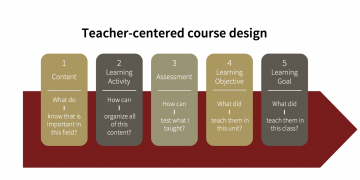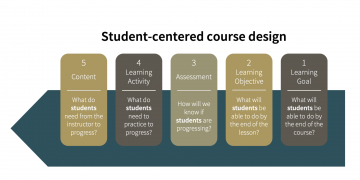What are student-centered classrooms?
The following video discussed that student-centered classrooms are focused on students’ interests and curiosities. In this sense, students choose not only what but also how they will learn. Consequently, student-centered classrooms have many specific characteristics different from traditional ones. However, these features can bring many advantages to students learning.
Source: Edutopia (2022, May 3).
Characteristics and advantages of student-centered classrooms

- Active & collaborative learning: learning happens while students are engaged in a practical task in student-centered classrooms. In general, these tasks are based on real-world situations and request collaborative group work. These types of tasks have been named such as inquiry based activities, authentic or performance tasks/assessment, active learning pedagogies, or groupwork activities.
- Focus on both content and competency skills: student-centered classrooms aspire to develop both academic and non-academic students’ skills. Hence, teachers design lessons focused on content and competencies which is aligned with BC Curriculum.
- Student voice & choice: listening to student voices and designing lessons based on students’ choices and interests can improve engagement (links to external resource) in the classroom, and consequently learning. In this sense, teachers align curriculum goals with student voice and choice to produce a more engaged and even personalized teaching and learning environment. One example of this approach would be a choice board of activities or a choice in how students represent their learning.
- Differentiation: teachers should design lessons that support students with different backgrounds and needs. To achieve all types of diversity, teachers should vary what knowledge is taught, how they present curriculum content and competencies through activities, and how they assess students learning. Offering several teaching and learning process help to engage and reduce inequalities among students.
How do teachers design student-centered classrooms?
Stanford University explains that the process of designing student-centered classrooms may be different from designing teacher-centered classrooms. While teacher-centered lessons prioritize content, student-centered classrooms start by selecting the learning goals that students will achieve at the end of a lesson. As the image below shows, the student-centered design, also known as Backward Design, inverts the order of more traditional classrooms.


Source: Stanford University (2022, May 3).
References:
Edutopia (2022, May 3). Student-Centered Learning: Building Agency and Engagement. George Lucas Education Foundation. https://www.edutopia.org/video/student-centered-learning-building-agency-and-engagement.
Stanford University (2022, May 3). Teacher-centered vs. Student-centered course design. https://teachingcommons.stanford.edu/explore-teaching-guides/online-teaching-guide/theory-practice/teacher-centered-vs-student-centered
Guest post by Peer Tutor Ariane Faria dos Santos (Ph.D. EDCP), May. 2022.

